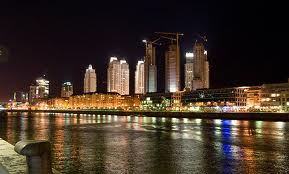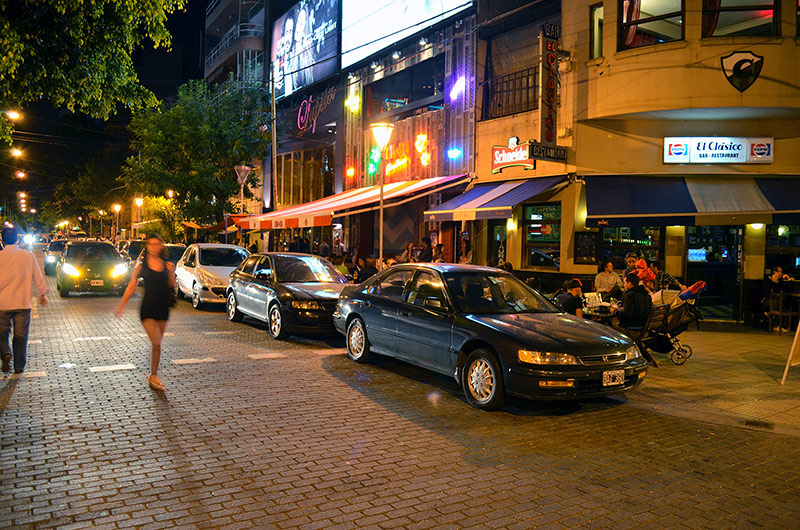BA-Walking-Tours.com
Buenos Aires Walking Tours

|
Private-Buenos-Aires-Tours.com
BA-Walking-Tours.com Buenos Aires Walking Tours |

|

|
| Amazing food: Locro, Carbonada, Salads, Empanadas and much more deliciousness... |
Book Now
• Description: Scroll (way) down for extensive information!
• When: 7:30 pm daily 365 days/year, rain or shine (this tour is only available by booking ahead through our 'Booking' menu entry above)
• Duration: 4 hours (7:30pm to 11:30pm. Soon after we start—and early by local standards—we will stop for dinner 'a la carte' (you choose) at some unforgettable typical-Argentine-food place of our choice (cost is NOT included—you pay). We choose different restaurants each day (you can join every night if you wish!!), and we will advise you on the foods to choose and their history (vegeterian options are always available). Excellent drinks, wine and beer are optionally available (on you: we advise, you choose, you pay).
• Price: Price for 2 people, $125 each. Click 'Book Now' for single-walker and small-groups. Contact us for large group pricing.
• Discounts: Discounts available for large groups.
• Meet: Hotel pickup is available at downtown hotels for a small additional fee (USD $20) if you let us know with at least 24hs advance. Unless otherwise specified, these tours meet 7:30pm at the downtown corner of Santa Fe Av. and Callao Av., at the door of the coffee store. Your guide will be holding a 'BA-Walking-Tours' sign. See map here.
• Note: Please note this is not a tour about drinking (though drinks are OK). Booze is not a cultural mainstay here: Going out at night, walking around, cafe & restaurant hopping, people-watching, enjoying outstanding food and ending the night with some treat (much later and somewhere else) are! Coverage of full itinerary may depend on circumstances at time of tour (weather, city-dynamics, riots, traffic, etc.)
• Some key sights:

 (top...)
(top...) Palermo Viejo, once a run-down neighborhood of warehouses, factories, and tiny decaying stucco homes in which few people cared to live as recently as 15 years ago, has been transformed into the city's chicest destination. Palermo Viejo is further divided into Palermo Soho to the south and Palermo Hollywood to the north, with railway tracks and Avenida Juan B. Justo as the dividing line. With real estate pressure and the need to always be trendy, many areas that are technically in Palermo Hollywood are now saying they are in Palermo Soho, considered the more upscale of the two areas, blurring this dividing line.
(top...)
Palermo Viejo, once a run-down neighborhood of warehouses, factories, and tiny decaying stucco homes in which few people cared to live as recently as 15 years ago, has been transformed into the city's chicest destination. Palermo Viejo is further divided into Palermo Soho to the south and Palermo Hollywood to the north, with railway tracks and Avenida Juan B. Justo as the dividing line. With real estate pressure and the need to always be trendy, many areas that are technically in Palermo Hollywood are now saying they are in Palermo Soho, considered the more upscale of the two areas, blurring this dividing line.
(top...) Recoleta A very elegant neighborhood, La Recoleta has a distinctly European feel, and locals call it a piece of Paris transplanted. Here, tree-lined avenues lead past fashionable restaurants, cafes, boutiques, and galleries. Much of the action takes place along the pedestrian walkway Roberto M. Ortiz and in front of the Cultural Center and Recoleta Cemetery. This is a neighborhood of plazas and parks, a place where tourists and wealthy Argentines spend their leisure time outside. Weekends bring street performances, artisan exhibits, fairs, and sports.
(top...)
Recoleta A very elegant neighborhood, La Recoleta has a distinctly European feel, and locals call it a piece of Paris transplanted. Here, tree-lined avenues lead past fashionable restaurants, cafes, boutiques, and galleries. Much of the action takes place along the pedestrian walkway Roberto M. Ortiz and in front of the Cultural Center and Recoleta Cemetery. This is a neighborhood of plazas and parks, a place where tourists and wealthy Argentines spend their leisure time outside. Weekends bring street performances, artisan exhibits, fairs, and sports.
(top...) (top...)
(top...)|
Reservations (Whatsapp enabled) in English, click on number below: Tel. +(54 911) 6566-5050 |